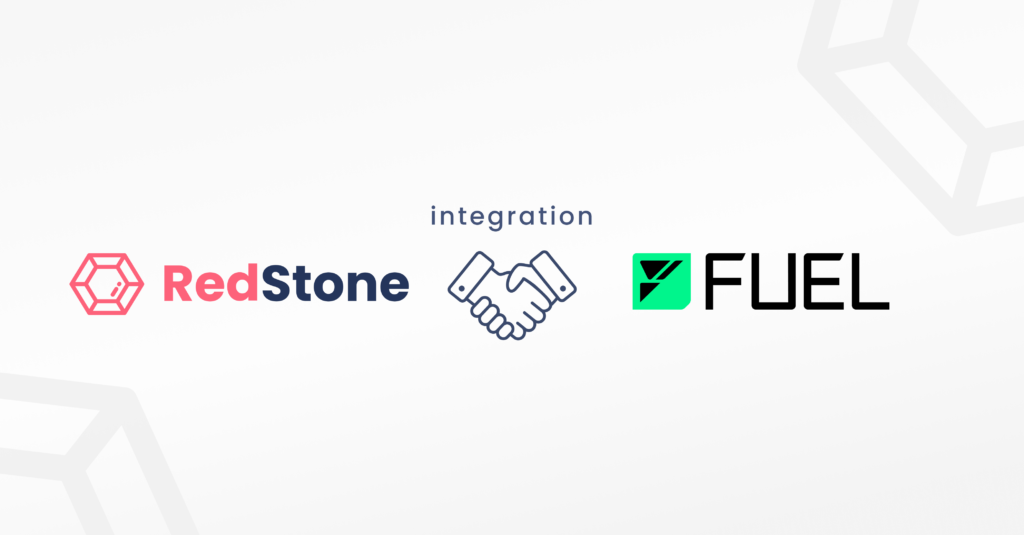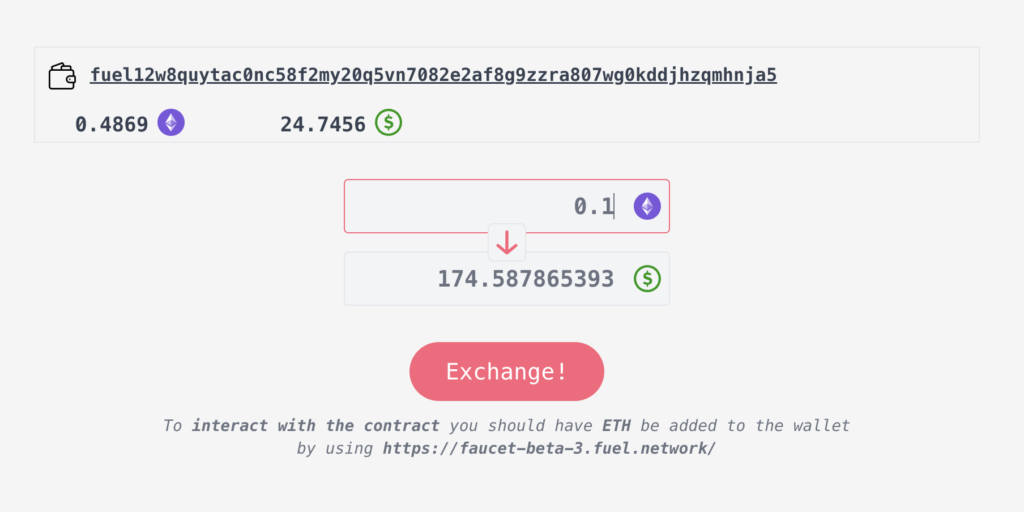
What is Fuel?
Fuel (v1) began as a layer-2 (L2) scalability technology for Ethereum and was the first optimistic rollup on mainnet Ethereum, deployed at the end of 2020.
Today, Fuel is the fastest modular execution layer. Fuel delivers the highest security and flexible throughput, with a focus on a superior developer experience.
Fuel aims to scale Ethereum beyond the EVM, by leveraging parallel transaction execution, the Fuel Virtual Machine (FuelVM) and vertically integrated developer tooling with Sway Language and Forc.
Fuel x RedStone: rocket propellant for DeFi
It all started with a grant proposal where RedStone suggested a completely new modular design where data is first put into a data availability layer and then fetched on-chain. This allows to broadcast of a large number of assets at high frequency to a cheaper layer and put it on the chain only when required by the protocol.
RedStone Oracles’ entry into the Fuel Ecosystem has introduced unique elements to the DeFi landscape. Primarily, it employs the new Sway language, offering a fresh approach to smart contract programming. Additionally, Fuel’s support for multiple native assets is distinct. Unlike many blockchains focused on a single asset, Fuel allows any asset to be forwarded with a CALL and contracts can maintain balances of all possible assets. However, only the base asset is used for gas fees, balancing innovation with transaction simplicity. These unique features position Fuel distinctively in the blockchain sphere.
Fuel x RedStone Integration
RedStone adopted a modular approach that stores data off-chain until required, thus enhancing efficiency. The @redstone-finance/fuel-connector module is crucial, providing an alternative method of offering oracle data to smart contracts. Data is stored in a decentralized cache layer, managed by RedStone light cache gateways and streamr data broadcasting protocol, until end-users transfer it to the Fuel network. The code structure includes on-chain libraries, various tests, and TypeScript classes for fuel-network layers. The process of connecting to the contract involves importing the connector code and utilizing its methods. Furthermore, RedStone’s fuel-connector is part of the Fuel Grants Program, aimed at supporting projects building on Fuel. This engagement shows RedStone’s commitment to fostering the growth of the Fuel ecosystem. Overall, RedStone’s innovative approach bolsters efficiency in Fuel’s data management.

“The integration of RedStone Oracles into the Fuel Ecosystem is a leap forward in our DeFi expansion. Their unique approach to on-demand oracle data combined with Fuel’s fast, modular execution layer has the potential to facilitate the launch of both new and existing decentralized applications on Fuel in the near future.”
said Nick Dodson, Fuel Labs CEO.
Integration Challenges
Fuel is a dynamically evolving network, showcasing regular updates in its Sway language and SDK layers. New components are emerging frequently, leading to modifications in syntax and ABI compatibility, necessitating constant vigilance to ensure SDK version alignment with backend configurations. At present, our use of contracts on the latest backend and Sway is impeded by our TypeScript layer. Regardless, we are ready on a component level, eagerly awaiting the possibility of full integration. It’s worth mentioning that despite these challenges, the Fuel team has been exceptionally supportive and instrumental in helping us navigate this complex landscape. Understanding that non-functioning elements are part and parcel of dealing with complex tasks is crucial, as we deviate far from basic operations.
We recently faced a significant challenge when generating a deep code that the compiler could not accommodate due to its inherent limitations. The person fixing the bug spent over a week trying to reproduce our error using abstract data. Learn more about it – here. We feel that our innovative ideas are forcing positive changes throughout the entire system, so the challenges are mutual.
“The integration of RedStone Oracles with the Fuel Ecosystem isn’t just about adopting new technology. It’s about setting new standards for speed, efficiency, and reliability in DeFi applications. Fluid will not only integrate RedStone, but also work closely with the team to keep upgrading its capabilities.”
said Meir Bank, Fluid Protocol CTO.
What’s next?
The integration, described in this case study, of RedStone Oracles into the Fuel Ecosystem has unlocked a wealth of new features and opportunities, particularly for the DeFi sector within Fuel ecosystem. The high performance and speed of Fuel align seamlessly with RedStone’s vision for ultra-low latency on-demand Oracles, making real-time, accurate data available for smart contracts. Oracles are critical for the development of DeFi applications such as lending platforms, derivatives, options, and perpetuals, providing reliable and timely data necessary for their functioning. In essence, this integration is a major step towards a more efficient, transparent, and inclusive DeFi ecosystem.
About RedStone
RedStone is revolutionizing Oracles industry by implementing a novel modular design and 3 tailor-made data consumption models. You can build the new generation of DeFi & Web3 protocols based on RedStone’s versatile data offering of long-tail, Lp, and Ecosystem-native tokens, as well as Real World Data and custom feeds.